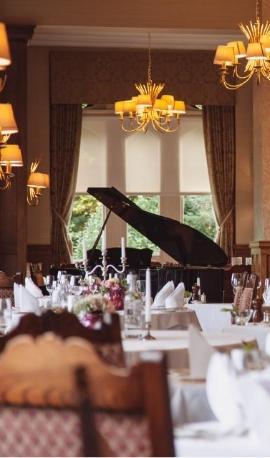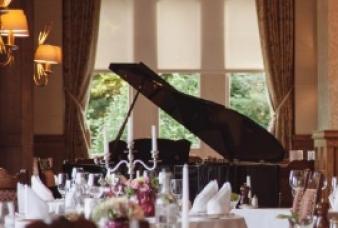We were delighted to welcome Medical Director and Consultant Anaesthetist of Queen Victoria Hospital, Dr Ed Pickles, along with Camilla Slattery who works for the Queen Victoria Hosptial Foundation Trust Charity, to host our 1st Ladies Luncheon of 2019.
The Queen Victoria Hosptial Foundation Trust is Ashdown Park Hotel & Country Club's nominated charity for the year and we would like to extend thanks to everyone who attended and supported our first fundraising efforts. Congratulations to our lucky raffle prize winners!
The Queen Victoria Hospital
The origins of the Hospital date to 1863, with the 'East Grinstead Cottage Hospital'. In 1902 the cottage hospital was named out of respect, after Queen Victoria, who passed away in 1901. Following her death, it became customary to name places of importance after her.
In 1930 the four-acre site the hospital occupies today was gifted to the town and by 1936 enough money had been raised to build a larger purpose-built facility which is now known as the Jubilee centre and home to the A&E department.
During WWII the Queen Victoria Hospital was one of four specialist burn hospitals in England. It had three wards, one of which was specifically for Allied aircrew. This is where Archibald McIndoe developed some of his pioneering plastic surgery techniques and introduced a more holistic approach in the treatment of burn victims.
The young men who were treated established a social group which they called 'The Guinea Pig Club', of which there were 649 members. The severity of these individual's injuries was often extreme. The holistic approach to the treatment was encouraged to not only make the hospital surroundings feel less intimidating but to raise spirits and encourage socialisation with the aim to reduce depression and anxiety often caused by these injuries. In ward-three they added a piano for the men to play and sing around. Drapes, other homely features and creature comforts were added over time. Dr. McIndoe also encouraged socialisation between patients, staff and the surrounding community. Patients would frequent East Grinstead, a town which became known as 'the town that didn't stare' and many patients found a new partner - be it one of the hospitals own nurses or local town residents.
Celebrities of the day, such as Clark Gable, would also visit the hospital to help raise morale and the profile of the work being done.
Although Dr McIndoe helped path the way for new treatments, it was very much a collective endeavour, with nurses, orderlies, anaesthetists, as well as McIndoe’s surgical colleagues and trainees all having crucial parts to play. He relied on his colleagues and was once said to have tried surgery without his usual operation assistant, Jill Mullens and said, never again.
Today McIndoe’s legacy lives on. The Queen Victoria Hospital remains the regional centre for specialist plastic and reconstructive surgery and rehabilitation, with continued research and development in pioneering techniques.
You can learn more about the amazing history of Queen Victoria Hospital at The East Grinstead Museum, where a permanent exhibition called 'Rebuilding Bodies and Souls’, which displays objects including equipment, surgical instruments and prostheses, photographs, paintings and other memorabilia.
If you are interested in learning more about the work this amazing hospital does today and how you can help support the charity, please click here.










